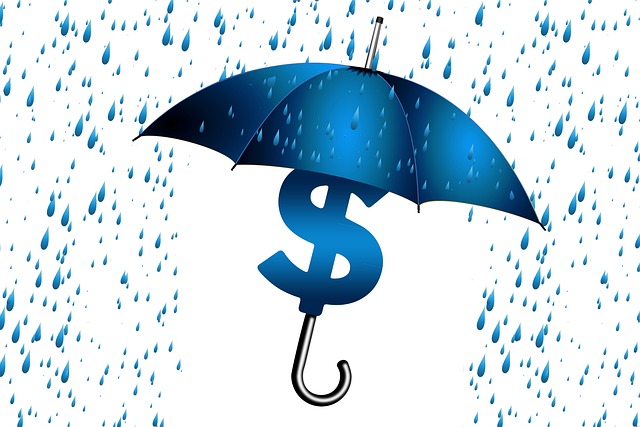Business Interruption Insurance (BII) is a crucial safety net for companies facing unexpected property damage or disasters, offering financial protection during periods of ceased or reduced operations. It covers lost income and extra expenses incurred during recovery, ensuring business stability and continuity by maintaining essential expenses like staff wages and rent. BII becomes vital in mitigating risks from natural disasters, fires, vandalism, and structural failures, which can cause immediate financial strain, temporary closures, and long-term challenges. Key policy elements include clear definitions of covered events, duration and compensation limits, relocation costs, extra expense coverage, and effective loss assessment/claiming processes. Real-world case studies highlight BII's value in securing market positions and faster operation restarts during unforeseen interruptions. In today's digital era, BII is adapting to meet new challenges through advanced technologies and integrated business continuity planning strategies.
In today’s unpredictable business landscape, understanding Business Interruption Insurance (BII) is more crucial than ever. This essential coverage protects against revenue loss due to unexpected events causing property damage, disrupting operations. From natural disasters to cyberattacks, common causes of property damage can cripple businesses, leading to short-term closures and long-term financial strain. This article delves into the intricacies of BII, offering insights on policy components, claim assessment, real-world case studies, risk mitigation strategies, and future trends, empowering business owners to navigate disruptions effectively.
Understanding Business Interruption Insurance: What It Covers

Business Interruption Insurance is a critical safety net for businesses facing unexpected property damage or disasters. This type of insurance provides financial protection during the period when a business must cease or reduce operations due to an insured event, such as fires, floods, or storms. It covers the loss of income and extra expenses incurred while the business is recovering.
The policy typically includes coverage for the necessary costs to continue operations at a different location, as well as the difference in revenue during the period when the business is unable to operate normally. This can include expenses like staff wages, rent, and other overhead costs, ensuring that businesses can maintain stability and continuity even amidst disruptions.
Common Causes of Property Damage Leading to Business Disruptions

Property damage can wreak havoc on businesses, leading to significant disruptions and losses. Understanding common causes is essential for businesses to prepare and mitigate risks effectively. Natural disasters like floods, hurricanes, and earthquakes are frequent culprits, causing widespread destruction and forcing non-essential businesses to shut down temporarily. Fire outbreaks, whether accidental or deliberate, pose another serious threat, damaging physical assets and disrupting operations for extended periods.
Vandalism and criminal activities can also result in substantial property damage, particularly for businesses operating in areas with high crime rates. Moreover, structural failures due to aging infrastructure, poor maintenance, or unforeseen structural issues can lead to costly closures while repairs are underway. Business Interruption Insurance plays a crucial role in mitigating these risks by providing financial protection during periods of decreased revenue and operational capacity caused by covered property damage events.
The Impact of Property Damage on Businesses: Short-term and Long-term Consequences

Property damage can significantly disrupt business operations, leading to substantial financial losses and long-lasting consequences. The impact is twofold: immediate and short-term challenges, as well as prolonged effects that demand strategic adjustments for businesses to recover and thrive post-disaster. When a business faces property damage due to unforeseen events like natural calamities or man-made disasters, the initial response involves assessing the extent of the loss, which includes inventory damage, equipment failure, or even structural instability. This phase often results in temporary closure, disrupting daily operations and causing immediate financial strain on businesses, especially those heavily reliant on physical locations for sales and services.
Long-term repercussions include market position erosion, customer loyalty shifts, and operational inefficiencies. Businesses might struggle to maintain their client base as competitors step in during the recovery period. Additionally, rebuilding efforts may require substantial investments, hindering short-term profitability. Here’s where Business Interruption Insurance plays a pivotal role by providing financial protection against such unforeseen events. This insurance policy compensates businesses for revenue loss and additional living expenses incurred during downtime caused by property damage, enabling them to maintain stability and focus on recovery while mitigating the risk of permanent closure.
Key Components of a Comprehensive Business Interruption Policy

When crafting a policy for business interruption due to property damage, several key components ensure comprehensive coverage. Firstly, the policy should clearly define the scope of covered events, including specific perils like fire, flood, or storms that could disrupt operations. This provides a solid foundation by outlining what circumstances trigger the insurance. Secondly, the duration and limits of interruption coverage must be specified. Insurers often offer different time periods, with varying levels of compensation for extended downtime.
Additionally, a crucial aspect is the business’s ability to resume operations at an alternative site if the primary location becomes uninhabitable. The policy should account for these relocation costs and the loss of revenue during the transition phase. Furthermore, extra expense coverage is essential, compensating businesses for expenses incurred to maintain operations during interruption, such as temporary staffing or equipment rental. Integrating these components ensures that a business interruption insurance policy provides adequate protection against potential property damage scenarios.
How to Assess and Claim Business Interruption Losses Effectively

Assessing and claiming business interruption losses effectively is crucial for businesses recovering from property damage. The first step involves documenting the specific reasons why operations were disrupted, including quantifying revenue loss due to reduced sales or increased costs during the period of disruption. This includes gathering financial records, sales data, and any relevant documents that illustrate the impact on your business.
Next, review your Business Interruption Insurance policy to understand what’s covered and what isn’t. Compare the policy terms with the actual losses incurred. Prepare a detailed claim outlining the interruption, providing evidence of loss, and adhering to the insurer’s specific claim submission guidelines. This organized approach ensures a smoother process in recovering compensation for business interruption losses from your insurance provider.
Case Studies: Real-world Examples of Successful Business Interruption Claims

Business Interruption Insurance has proven to be a valuable asset for many businesses facing property damage disruptions. Case studies offer tangible examples of its effectiveness. For instance, a manufacturing plant experienced a severe fire that required extensive repairs. Thanks to their Business Interruption Insurance, they received compensation not only for the physical damage but also for the loss of revenue during the shutdown. This enabled them to cover emergency expenses, restart operations faster, and minimize financial strain.
Another example involves a retail store hit by a natural disaster. The Business Interruption Insurance policy covered costs associated with relocating staff, restoring computer systems, and reopening within weeks. This quick recovery not only secured their market position but also demonstrated the importance of having such coverage in unpredictable times. These real-world scenarios underscore how Business Interruption Insurance can be a lifeline for businesses facing unforeseen property damage interruptions.
Best Practices for Risk Mitigation and Business Continuity Planning

Future Trends in Business Interruption Insurance: Staying Ahead of the Curve

As we move further into the digital age, the landscape of business interruption insurance is evolving to meet new challenges and opportunities presented by an increasingly complex global environment. Future trends in Business Interruption Insurance (BII) are focused on enhancing coverage to account for emerging risks such as cyberattacks, extreme weather events, and pandemics. Insurers are also leveraging technology to improve risk assessment, claims processing, and policy customization. Artificial intelligence, machine learning, and big data analytics enable more precise predictions and faster payouts, ensuring businesses can stay operational during unforeseen disruptions.
Another notable trend is the integration of business continuity planning (BCP) into BII policies. This approach recognizes that effective recovery strategies are not just add-ons but integral parts of overall risk management. By combining robust BCP frameworks with tailored insurance coverage, businesses gain a powerful tool to navigate turbulent times. This proactive approach ensures they can bounce back faster, minimizing downtime and financial losses associated with disruptive events.
